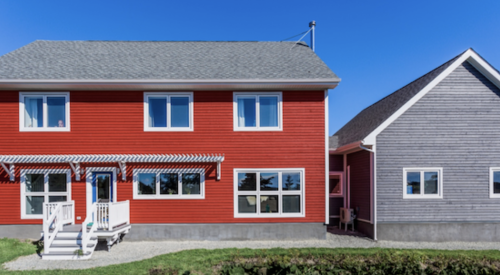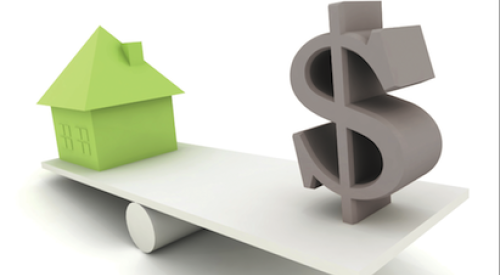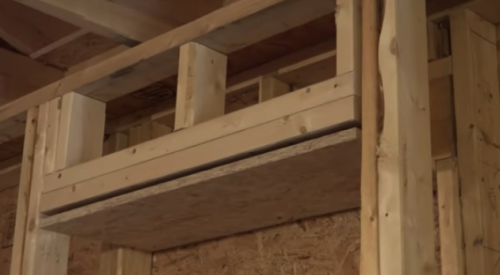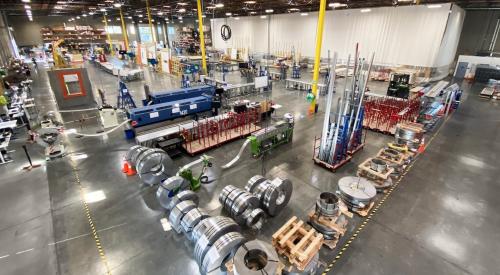
President
SEEFAR Building Analytics
Total Cost of Building Ownership (TCBO) is an analysis builders and architects can use during the design phase of new construction or remodeling projects to help clients compare the up-front cost of a high-performance home, and the operating cash savings they can realize over the long term, with a minimum code-compliant building. Jim Nostedt of SEEFAR Building Analytics, in Winnipeg, Manitoba, is an expert on how this life-cycle costing method monetizes building features such as advanced framing, extra insulation, and durable building materials that result in less maintenance and lower associated costs—aspects typical appraisals miss—ultimately helping convince buyers to opt for more sustainable homes, which have a higher resale value.
PRO BUILDER: Please describe the service and analytics SEEFAR provides.
Jim Nostedt: SEEFAR Building Analytics performs whole-building life-cycle costing, or the Total Cost of Building Ownership analysis, of new or existing buildings. We prefer the term TCBO, as we are evaluating the whole building over its useful life—typically 60 years—based on all major operating and maintenance costs, such as utilities, carbon tax, property tax, mortgage interest, age-related component maintenance, and renewal. This analysis is used to optimize the building investment at the design stage and typically shows that new, high-performance buildings or deep retrofits of existing buildings have a 30% to 40% lower TCBO than minimum code-compliant buildings. It follows that lower TCBO levels produce lower operating cash demands and therefore much better investment and resale value.
PB: Why should a home builder care about TCBO? What’s in it for them?
JN: A high-performance building will have a 3% to 20% higher first cost, so the builder will have a higher profit based on the higher construction cost. However, when the focus of the whole building design and construction is shifted from the lowest first cost to the lowest life-cycle cost, everything changes. The homeowner will also change their perspective to more durable building materials that have a lower TCBO. For example, a metal roof costs more money up front, but it can have a lower TCBO than an asphalt shingle roof that lasts just 20 years and must be replaced with a more expensive roof that has [since increased in price] due to inflation.
PB: What’s in it for the homebuyer?
JN: The homebuyer of a high-performance home has a 30% to 40% lower TCBO. Remember that a $500,000 home will cost $5 million to own and operate over its useful life. A 30% to 40% savings is $150,000 to $200,000. The high-performance home will also have an 80+% saving in energy costs, be more resilient to climate change, be a more comfortable home with no drafts, and have better indoor air quality. This all contributes to higher resale values, which SEEFAR can measure on a net present value basis.
RELATED
- Video: Jim Nostedt explains how a $6,000 asphalt shingle roof is more expensive than a $13,000 metal roof
- Can Building a Passive House Cost the Same as a Code-Built Home?
- 14 Best Practices in High-Performance Home Design
PB: What is a high-performance building?
JN: The National Institute of Building Sciences defines a high-performance building as one that integrates and optimizes all building performance attributes, such as energy efficiency, greenhouse gas reduction, embodied carbon, the durability of materials, life-cycle performance, and occupant comfort and productivity. People often focus on the amount of energy a building uses. Energy can often be 20% to 60% of the TCBO, but many other costs make up the TCBO. The durability of building materials is an important one, as every building component has a useful life and will have to be replaced at some point.
PB: How will homeowners recoup their additional cost in a high-performance home?
JN: The average length of homeownership is about 12 years, so how do you get the value out of the home when you leave? Will the new owner also want a high-performance home? We know a homebuyer will pay more for a home that costs less to operate. Every building that is applying for a commercial mortgage must be appraised, but most appraisals are based on a comparative analysis. So how do we differentiate the high-performance home from a similar-looking one? Appraisers have a green appraisal guide, but it does not monetize the green features. We have an appraisal report that monetizes the high-performance features so that the real added value is identified and passed on to the new owner.
PB: Will homebuyers be able to borrow the additional money for a high-performance home?
JN: High-performance homes cost from 3% to 20% more to build, but have a much lower TCBO. We provide an appraiser’s report that shows the monetized value of the high-performance home compared with code-built. Both the bank and the homeowner win because the bank loaned more money and the homeowner is less likely to default on the mortgage because their owning and operating costs are much lower.
PB: In an apples-to-apples comparison, what is the TCBO over the lifetime of a high-performance home compared with a code-built home?
JN: High-performance homes typically have a 30% to 40% lower TCBO than code-built homes. This can vary considerably, as code-built standards, energy costs, etc., vary across the continent, but there are significant savings. For example, in a case study from Manitoba, Canada, where energy costs are very low, 8 cents [Canadian] per kilowatt hour, the construction premium was $49,000 or 18% higher, but the TCBO savings were $336,000 or 35%. As more builders gain experience with high-performance home construction and construction shifts from stick-built to factory construction, costs will decrease. The Energiesprong program in the Netherlands saw a 50% construction cost decrease for retrofits as they shifted to factory construction of wall panels.
PB: How do the architect and builder use the SEEFAR-Valuation to minimize the TCBO and increase the investment value?
JN: The SEEAR-Valuation is used as an optimization tool early in the design process to help make clearer decisions about which building components or design scenarios have the lowest TCBO. The TCBO includes energy consumption from the energy model, life expectancy from the design team, and cost estimates from the contractor. The lowest TCBO is the best value.
PB: Can you share instances when a builder/client used TCBO as part of their sales/marketing pitch to get to contract or win over the buyer with a more high-performance home?
JN: We use case studies to show builders and clients what is possible. I have an architect client that likes to design using the Passive House standard. She shows the TCBO comparison between a code-built home and a high-performance passive home. Usually, this provides all of the convincing a new homebuyer needs. Once these people live in a high-performance home with no drafts, constant temperature, and good air quality, they become very good salespeople. She also uses this approach for retrofit construction.
PB: Who wins when a high-performance building is constructed?
JN: The owner wins because their TCBO is lower and the building is more resilient to climate change.The design team wins because their fees are higher and the work is more rewarding. The builder wins because the capital cost is higher and therefore their profit is higher. The bank wins because they loaned more money and with the lower operating and maintenance costs, there are fewer owner defaults.The occupants or renters win because their costs are lower and the building is more comfortable with better indoor air quality.













